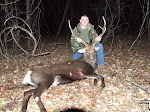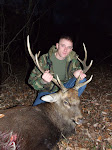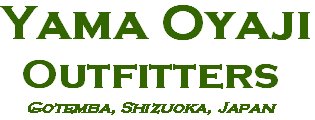"Traditional Wisdom Meets Scientific Theory"...What the heck are you talking about?Let me
explain: Traditional wisdom tells us that the 30 minutes before sunset, and the 30 minutes after sunrise are excellent times to hunt and fish. Why? Probably since during this time many animals/fish are seen traveling. Some may be headed to their food source, while others may be headed to their bedding areas. Some are
beginning their "day", and others are ending their "day" (nocturnal/diurnal). Theories abound but all most of us know is that animals are active.
Many people also consider the moon cycles as having some influence over the actions of animals and people, with particular emphasis being attributed to the full moon. Again, there are lots of theories out there. Some are quite
bizarre!
I first became interested in this subject while spending a lot of time night spearfishing along the shores of Okinawa, Japan. I noticed that many creatures were active 30 minutes before and after sunset, and again 30 minutes before and after sunrise. I was obviously not the first person to notice this but, in an effort to improve my catch, I did more research. I noticed that there were also active times related to the tides (2 hours
surroundings the slack tides, for example). I also noticed that there was a vast difference in activity levels on different days, which appeared to be possibly linked to the moon phase so I started more research. I hit the books (not many available) and the 'net. I finally landed on material detailing the theories around the solar and lunar tables being used to actually predict favorable fishing/hunting times. I started looking at the game movement times published by the major outdoor sports magazines, and the ones available on the web. While each company that produces these calendars makes different predictions, they are often very similar. I started comparing the times that were supposed to be high activity levels with my personal observations. Guess what, I really started seeing a correlation! Soon the fish activity predictions and tide charts became a mainstay of my spearfishing scheduling and I felt that they were extremely valuable. So valuable in fact, that I would actually decide not to dive if the charts predicted low activity.
Fast forward about 5 years and this convinced fisherman moved to the mountains and resumed big and small game hunting. I took a closer look at the solar and lunar charts, and the updated information available, and began to compare them with my personal observations afield. You guessed it, the charts and my personal observations matched almost exactly! I tested the charts for several hundred days afield over the next few years and then started sharing this info with my close friends. I started with my
Yabanjin Wife, SK-2, and would take her on "safari" during the non-hunting season to check tracks, trails, and possibly sight animals. I could virtually predict if we would see animals or not. Some afternoons/evenings we would not see a critter in 3 hours, and on predicted high activity level days we would see 10 or more animals in the same
locations at the same time as the day before. One one extremely memorable occasion we saw more than 40 deer and a huge
inoshishi on one grass slope eating together and they ran right in front of my super-
Jimny jeep. She was convinced and now the wife is also a
believer in these tables.
Don't forget all the local conditions that affect game/fish activity that are specific to your area. These include current weather, inbound weather, vehicle/hiker traffic, and other things that affect your quarry.
How to find out more info? I recommend doing some research independently. With so many companies out there making "
Solunar" tables and movement predictions, it is best to keep an open mind and use the ones that make sense to you, based on their stated research and your personal observations. I used the ones from the North American Hunting Club magazine as a reference but these are hard to convert to Japan times. I also used John Knight's
Solunar Tables which appeared to be more accurate but also cumbersome to convert. I f
inally hit
pay dirt with a simple Casio "Hunting Timer" watch. A few pushes of the buttons set it for my geographical area and it has been amazingly accurate. I also adjusted it for 3 hunting trips to Hokkaido with equally good results. This watch is also available as a "Fishing Timer" (same watch, different color, blue vice brown). They run about $39 US and are available in Japanese too. I am not selling a product here but this one has worked for me for the last 7 years.
I found a copy of the Casio instructions on line and used them to help me explain this to my hunting and fishing buddies. I have a few more
believers now.
While all of these charts try to make you
believe that they will tell you to the minute when you will see game, please apply your own common sense to this. I use it to make general decisions such as: still hunt from my stand or conduct drives, get up super early and sit in my stand, or sleep in late. I
ESPECIALLY LIKE THE SLEEPING IN LATE OPTION!
I know this is long, but I hope it is helpful to you if you have never heard of this. Remember, the most important thing is to spend the time in the field, on (or under) the water, and learn as much as you can about your quarry. These tables might help make more efficient use of your time, or put more food in the freezer, but true success should be measured by the time/experiences you have afield!
See you in the Yama!SK-1 OUT!


















 2m antenna on a 4m pole attached to the Super Shack...
2m antenna on a 4m pole attached to the Super Shack...

